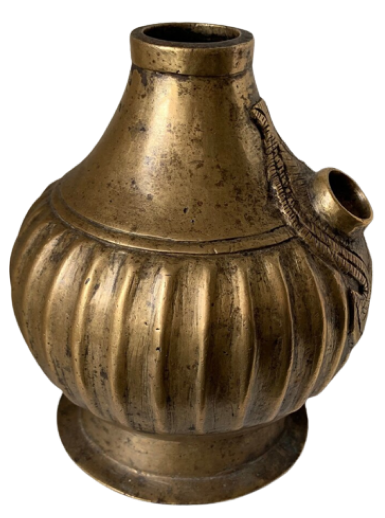Knowledge
What is an auction?

An auction is a sale in which buyers compete for a product by placing bids within the pre-determined auction time limit. A bid is an offer to set a price tag by an individual for the product.
Auctions are conducted both live (in a physical auction house) and online and can be closed or open.
In closed auctions, the buyers or bidders aren’t aware of the competing bids. They place sealed bids (visible to the auctioneer and the seller). In a sealed bid auction, participants will have beliefs about what others will bid. If a buyer believes that he/she will have the highest bid, and the second highest bid will be substantially beneath that, then he/she has an incentive to lower the bid. For example, if he/she values an item at ₹10,000, but believes that the second highest bidder values the item at ₹5000, then he/she is likely to place a bid slightly higher than ₹5000. If he/she is wrong about the distribution of other bids, then the final item will not go to the party that values it most, and the seller will have given up the item at a price lower than he could have achieved. The seller may choose to hold just one round of bidding or select two or more bidders for an additional auction round. Closed auctions are more typical for highly priced artwork and similar items.
In open auctions, the buyers are aware of the bids placed by all other participants. The buyer is aware of the competing bid amounts and continues to raise their bid until they are either declared the winner of the auction (i.e., they submit the last highest bid within the auction time limit) or until they decide to drop out of the bidding
TYPES OF AUCTIONS
1. English Auctions (Increasing price auctions)
In this type of auctions, the items are offered at increasing prices. They start with a minimum bid price and the buyers place incremental bids throughout the duration of auction and the item gets sold to the highest bidder once the auction closes, only if the winning bid surpasses the reserve price set by the seller.
2. Dutch Auctions (Decreasing price auctions)
It is the opposite of the English auction wherein the seller will initiate a high value and bidders will bid down from this high price, in other words, the bid price will go down until a bidder’s willing to take it.
3. Second-Price Auctions
In Nobel-prize winning work, the economist Vickrey designed a type of auction that combined the best features of an increasing-price auction and a sealed-bid auction. It works like a sealed-bid auction, in which all bids are sealed and sent to an auctioneer. Like a sealed bid auction, the highest bidder wins. But the price the winner pays is the price that the second highest bidder has bid. For example, suppose that we bid ₹10,000 and the second highest bid is ₹5,000. Then we will win the bid, but we will only have to pay ₹5,000 to secure the item.
4. Absolute Auctions
An absolute auction is an English auction without a reserve price. The winning bidder gets awarded the item regardless of the closing (or the hammer) price. For example, in an absolute auction, a set of decorative plates could be sold at ₹100 because there was only one bidder bidding on that item in the absolute auction.
Reserve Price and Buyers’ Premium
First off, let's define reserve price. A reserve price sets a minimum required bid for the item to be sold. In many traditional auctions, reserves are undisclosed (the bidders have no idea what the reserve price may be -- a blind reserve).
A buyer's premium is a percentage-based fee added to the winning bid price. This helps cover the auctioneer’s expenses and administrative costs and off-sets credit card fees. The larger auction houses sometimes charge up to a 30% buyer's premium.
On The Curio Store website, we believe in full transparency for both our buyers and sellers and as such, there are no ‘blind’ reserves or ‘extra’ buyer’s premium applicable. We do not have a blind reserve for any of the products auctioned on our platform. All the products have a starting price that the buyers can view along with the product details. That price is also treated as the reserve price, which means even if the bid is ₹1 higher than the starting price, the item will be sold!
We only charge up to 20% buyer’s premium which will be a part of the final hammer price and is not charged in addition to the bid price.
How other auction houses do it
If you won an auction through an auctioneer with a 25% buyer’s premium (not including GST and shipping charges) here’s how it would work out:
Winning bid price - ₹10,000
Buyer’s Premium (25%) - ₹2,500
Total price (before GST and shipping) - ₹12,500
What this means at The Curio Store…
Starting price - ₹5,000
Winning bid price - ₹5,100
Buyer’s Premium (20%) - ₹1,020 (part of the winning price)
Total price (before GST and shipping) - ₹5,100
The Curio Store’s E-Auction Style
We believe in an open and transparent auction system with no blind reserve, where the bidders are aware of the bids placed by the participants. Thus, we have adopted an Open English Auction system for most of our products. We may introduce other auction types depending on the rarity of the product and buyers’ wishes in future.
The Curio Store’s Bidding Process
A Soft Closure
The Curio Store website features extended bidding (a.k.a. "soft closing"). The system will automatically extend the closing time of a lot (auction item) whenever a bid is placed within the last few minutes of its scheduled closing. This may occur multiple times on any given item depending on the bidder-interest in that. Once all interest and bidding in the item ceases, the clock will run out and the auction will close. This is the fairest way to prevent “bid sniping” (someone submitting a high bid in the last seconds of any given item’s closing in order to win the said item) and to give all bidders an opportunity to increase their bids if they wish. It is also the closest way to mimic a live, in-person auction, where the auctioneer gives bidders opportunities to increase their bids if someone jumps into the bidding at the last moment before hammering the winning bid.


